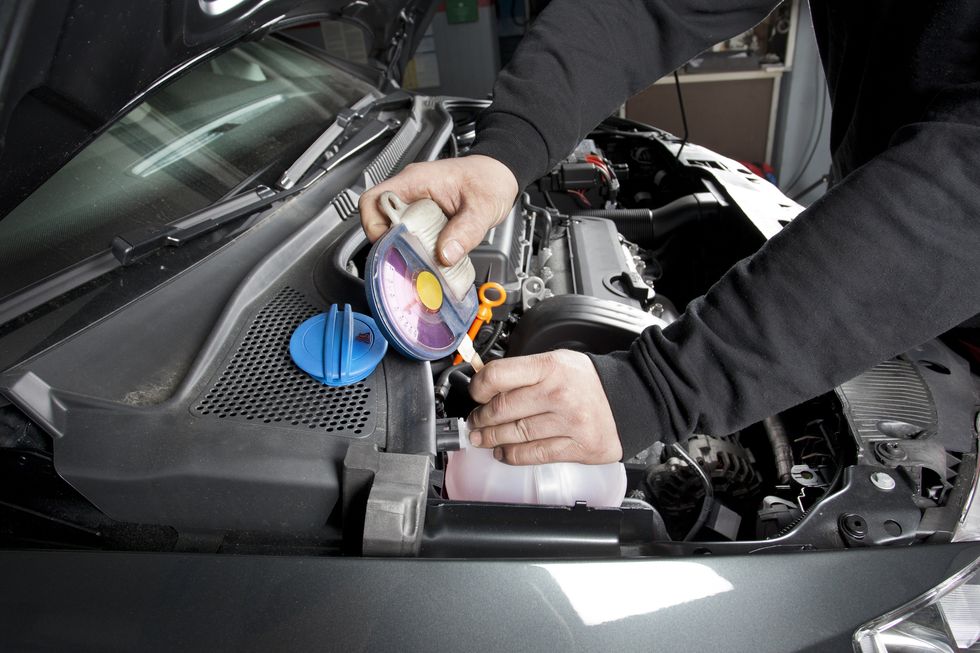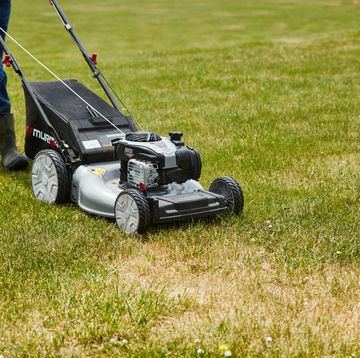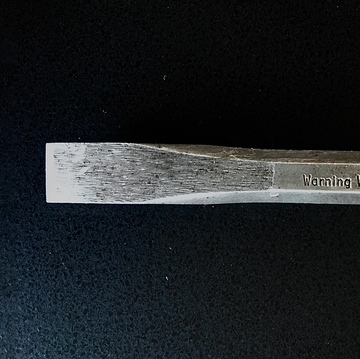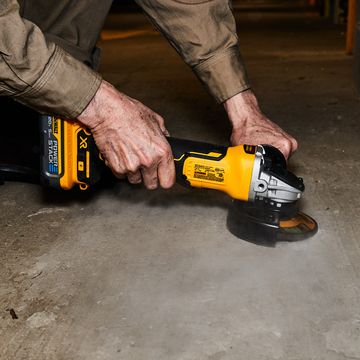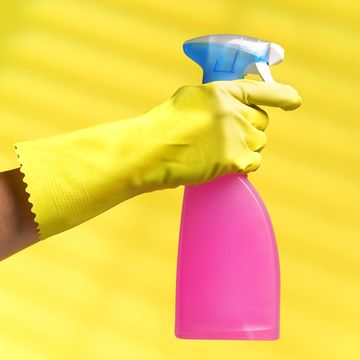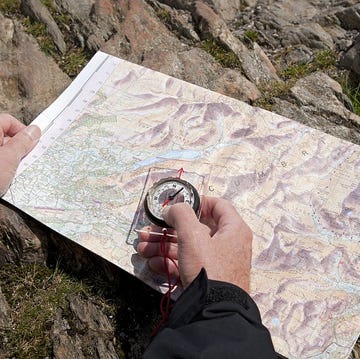Flushing and replacing coolant is a moderately difficult repair job. Consult the owner's manual, your car’s manufacturer, or a trusted mechanic for more specific information on your vehicle.
You take off the cap and look at the coolant. It's a nice shade of green, or maybe red or even orange. It looks good. Should you leave it in? If it's been two years or more since the last time you drained it, the answer is probably no.
Today's engines are loaded with aluminum components, including cylinder heads, water pumps, manifolds, and even engine blocks. The two primary heat exchangers—the radiator and heater—are also aluminum. Aluminum needs superb corrosion protection to survive, and the corrosion-inhibiting qualities of regular green and red antifreeze get used up in about two years. If you want your car to cool itself efficiently, you need all of these engine components to remain in good working order.
Of course, coolant really has two main jobs, which is why the terms “coolant” and “antifreeze” are interchangeable. In the winter months, antifreeze does just that: it doesn’t freeze in colder weather like water does. Frozen water in the cooling system can crack vital components of your car’s engine, including the engine block. Always keep in mind where you plan to drive and store your car, and choose an antifreeze that will be able to withstand the full range of high and low temperatures your car experiences.
How Antifreeze Keeps Your Car Cool
Simply put, a water pump circulates a mixture of antifreeze and water between your car’s engine and radiator. The coolant mixture heats up as it circulates through the engine. The water pump then moves that heated coolant through the upper radiator hose and into the radiator, which is a heat exchanger filled with metal tubes. These tubes are typically aluminum on newer cars, which is one of the reasons why choosing the right coolant is important. Fins attached to the metal radiator tubes draw heat away from the coolant and dissipate it into the air drawn through the radiator by fans and the forward motion of the car. The cooled coolant then gets pumped out of the radiator through the lower radiator hose and back into the engine, where the cycle starts all over again.
When the engine is cold, coolant circulates only within the engine, so the engine heat can warm it up faster. The coolant also heats a temperature-sensitive valve called a thermostat that opens at around 195 degrees Fahrenheit to allow the coolant to flow through the radiator. This thermostat may be located just before coolant leaves the engine to flow into the upper radiator hose or at the inlet to the water pump, the latter of which is the preferred location on most newer cars.
Coolant also flows through hoses that run into and out of the heater, which gives off its heat to the surrounding air like a miniature radiator. In this case, however, the heated air is blown into the passenger compartment.
Pressurizing the cooling system also raises the coolant's boiling point, so the radiator cap (which is sometimes located on the engine or the coolant reservoir) has a pressure valve to raise the pressure in the cooling system by around 15 psi. This increases the boiling point of the coolant by about 40 degrees. So, the boiling point of a 50/50 mix of antifreeze and water in a properly functioning system is about 265 degrees or higher, giving your engine a bit more leeway before the coolant overheats.
Choosing the Right Antifreeze
Most antifreeze is made with a base chemical called ethylene glycol. Green dye is used in most brands, although Toyota uses red. Longer-life coolant such as Dex-Cool is often dyed orange, and it offers about a year of extra use before it needs to be swapped out. Color isn't always a certain indicator of the kind of coolant in your car as it sometimes varies, but we’ll use those common colors for shorthand here. If your car came with a traditional green or red coolant, you can't switch to long-life orange coolant without a fair amount of preparation. If your car is older than four years old, a switch is not likely to yield any extra coolant life as you'd still need to drain and swap your coolant every two years.
The rust and corrosion inhibitors in these coolants vary, but if an antifreeze is green, assume that its life in a car with a lot of aluminum components is two years, or 30,000 miles—whichever comes first. You can push that to a third year if the engine is all cast iron. "Toyota Red" is a specific formula, but if you drain it, you can replace it with any similar name-brand American-car formula. The replacement interval for Toyota's red coolant is still two years or 30,000 miles.
The corrosion inhibitors in longer-life orange antifreeze are not chemically compatible with what's in the more typical green or red coolants, which is why you should never mix the two. Traditional green and red antifreezes rely on inorganic additive technology, which adds phosphates and silicates to prevent corrosion in your cooling system. Orange antifreeze, which was designed for use with modern aluminum engine components, uses organic additive technology instead that uses organic acids in the place of phosphates and silicates to keep vital engine components from corroding.
⚠️These directions are meant only as a maintenance procedure, not as a final step when replacing a part such as the water pump or radiator.
What about "pet-friendly" or "safer" antifreezes made with a base of propylene glycol? These name brands (such as Peak Sierra and Prestone Low Tox) will do the same job as traditional ethylene glycol coolants. However, they cost a little more and actually require you to use more of them to provide the same freeze protection.
These safer coolants aren't sweet, and thus, aren't as likely to be consumed by toddlers or pets. Don't rely on this, however. All coolant should be stored safely and disposed of properly.
In truth, these pet-friendly coolants are only a little bit less hazardous. Routine checks for leaks in your coolant system may be a better, more cost-effective option for preventing your car from overheating. After all, it only takes a couple seconds to glance over and check for a funny-colored coolant puddle under where your car is parked.
Regardless of what you use, always check your owner's manual to ensure that what you're using will work with your car.
Drain the Coolant
To get started on this vital maintenance, do a thorough job of draining the coolant. Start by checking the specifications in your car’s manual to see how much coolant goes in the system. This is important as capacities vary wildly from vehicle to vehicle. Some Toyota four-cylinder and V6 engines, for example, hold only about 5 1/2 quarts. Other systems hold 14 to 18 quarts. This way, you'll know what percentage of the coolant in your system drains out.
Start with a cool engine, but be sure to move the dashboard temperature lever to its hottest setting. This way, if your car has a heater coolant control valve, it will open, allowing more coolant to flow. This is an electronically controlled switch on many modern cars, so be sure to turn the ignition to the on position for a few seconds to make sure it’s open.
Then remove the radiator cap and open the radiator drain plug, the latter of which is usually located near the bottom of the radiator.
If the drain plug is in a hard-to-reach place, you may need to use a bendable socket. If you really can’t reach the drain plug, disconnect the lower radiator hose from the radiator. Move the hose clamp back from the radiator neck, and carefully disconnect the hose at that end.
Let the coolant drain into a pan. Draining the radiator alone should remove roughly 40 to 45 percent of the system’s coolant.
Next, find the coolant drain plug on your engine block, which often looks like a bolt. Move your drain pan under this plug and open it to allow the coolant within your block to flow out. Once the engine block has drained, replace the engine drain plug with a fresh washer and some high-temperature thread locker. Tighten this plug to the specifications listed in your car’s manual using a torque wrench. Next, reinstall the radiator drain plug.
Remove the coolant overflow reservoir and drain that into your collection pan, too. Clean the inside of this thoroughly as it’s a common place for dirt to enter the system. Reinstall it once it’s clean and empty.
Pay attention to what comes out of your cooling system, too. If your used coolant looks like a chocolate milkshake, that means oil has mixed with your coolant, and that’s a sign of larger problems such as a blown head gasket that you’ll need to fix immediately.
You may also opt to flush the system with water if you want to ensure that none of the old coolant is still in your car. After the first drain, fill the system with water, then warm up the engine and let it cool. Drain the radiator again and fill it once more with water. Repeat.
This is where the type of coolant you’re using comes into play. If your car has used the green coolant for at least 5,000 miles, then clearly that coolant works well with your engine’s components. If you want to switch to long-life orange coolant after that, be sure to do this thorough drain-by-dilution of the system at least three times. The coolant you drain out after the last water flush should be virtually clear. If it's still green, you have to repeat the process until nothing green is still coming out of your engine bay.
As for what to do with the old stuff, you should never pour used coolant on the ground, down a storm drain, or down your household drain as it accumulates metals that can be toxic to children and wildlife. If your car has a copper radiator or heater core, for example, that used coolant will be contaminated with lead solder. Many municipalities have hazardous waste disposal facilities that will take it. You may also be able to take it to a local automotive store or shop and ask if they can dispose of your used fluids.
Fill the System
Now comes the hard part: filling the system. For this, you’ll pour in a mix of half coolant and half distilled water (never water from the tap or the hose). For example, if your car holds 12 quarts, you want to install 6 quarts of undiluted antifreeze mixed with 6 quarts of distilled water. Mix the water and antifreeze in a clean container outside of the vehicle. You can reuse the coolant jugs for this as the only thing that’s been in them was fresh coolant. You can also buy antifreeze that’s been premixed with water, at which point you can skip this mixing step.
A car’s cooling system has lots of nooks and crannies that trap air, making it difficult to fill the system with coolant. The fill cap and neck are supposed to be at the high point of the system to help air bleed out, but often they aren't. Even if they are, you need all the natural help you can get to get coolant into every part of the system. So, jack up the front of the car to get the coolant fill neck as high as possible.
Next, check for air bleeds on the engine. Sometimes you'll see an obvious air bleed, such as a boltlike item threaded into a hose or poking up from a high point on the engine. If your cooling system has an air bleed, open it. If there are several, open them all. If you have access to a factory service manual for your car, check it for a coolant fill procedure and follow those guidelines. Otherwise, our directions are pretty standard for most vehicles.
Fill your coolant overflow reservoir below its maximum fill line with a half-and-half mix of water and antifreeze and reinstall it with its cap on. Then slowly pour the required amount of antifreeze into the system’s coolant fill neck until you either see coolant oozing out of the open air bleeds or the coolant comes up to the base of the filler neck. Then close the bleeds.
Without capping off the fill neck just yet, start your car and run it long enough to turn the radiator fans on a couple times. If the system has a heater coolant valve, close it by moving the interior temperature control lever or knob to its coldest setting. Bubbles of air in the system will make their way up and out of the filler neck. Top it off whenever the coolant level dips below the base of the filler neck and put the cap on once it stops bubbling.
With the engine warmed up and running at fast idle, move the interior temperature control lever or knob to its hottest setting while you listen to the heater coolant valve. If after the first rush of coolant you hear a continuous gurgling noise, there's still air in the system. Open the fill neck back up or crack open the system’s high point vent to let those bubbles out.
Be prepared to watch the coolant level in the reservoir over the next few weeks just to be sure.
Checking Your Work
Remember how pressure in the coolant system helps improve the heat tolerance of your coolant? Using a pressure tester is a good way to ensure your system can hold the right amount of pressure. Being able to hold pressure also means that there are no leaks where air can get in and coolant can get out. Letting the bubbles rise up out of the neck is usually good enough, but it’s best to make sure your system can hold its optimum pressure if you can. In the summer heat, why risk it? Air in the system is one of the leading causes of overheating.
Most major auto parts chains loan out pressure testers at the counter. To check the system pressure, open the radiator or overflow reservoir cap. The cap you want is typically labeled “contents under pressure” or something to that effect. Make sure the overflow reservoir has enough coolant in it (somewhere between its minimum and maximum fill lines) and attach the pressure tester to that opening.
Pressurize the system slowly using the pressure tester until a steady stream of coolant flows out of the system’s overflow line, making sure not to exceed the maximum amount of pressure listed on your radiator or overflow reservoir cap. Hold it there for a few minutes and check to make sure nothing is leaking coolant. Replace the cap when you’re done. Warm the car up once more with the heater controls set to its hottest, most open setting to make sure nothing’s gurgling, and congratulations!
Now you have fresh antifreeze that will keep your engine as cool as possible during summer’s hottest days.
Stef Schrader routinely breaks and attempts to take project cars on race tracks. She enjoys fancy cheeses, good coffee, fast Porsches, traveling to new places and rare, weird cars. She lives with a large collection of Fisher-Price Puffalumps and an overloaded parts shed.







